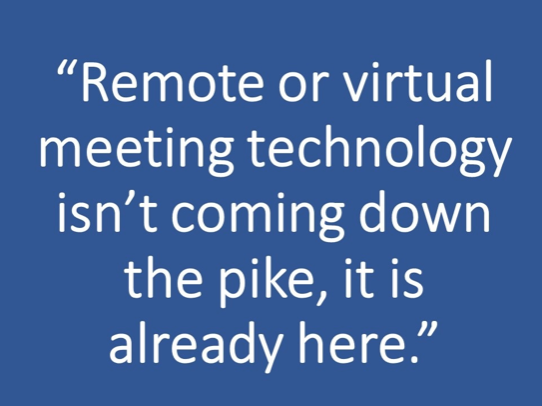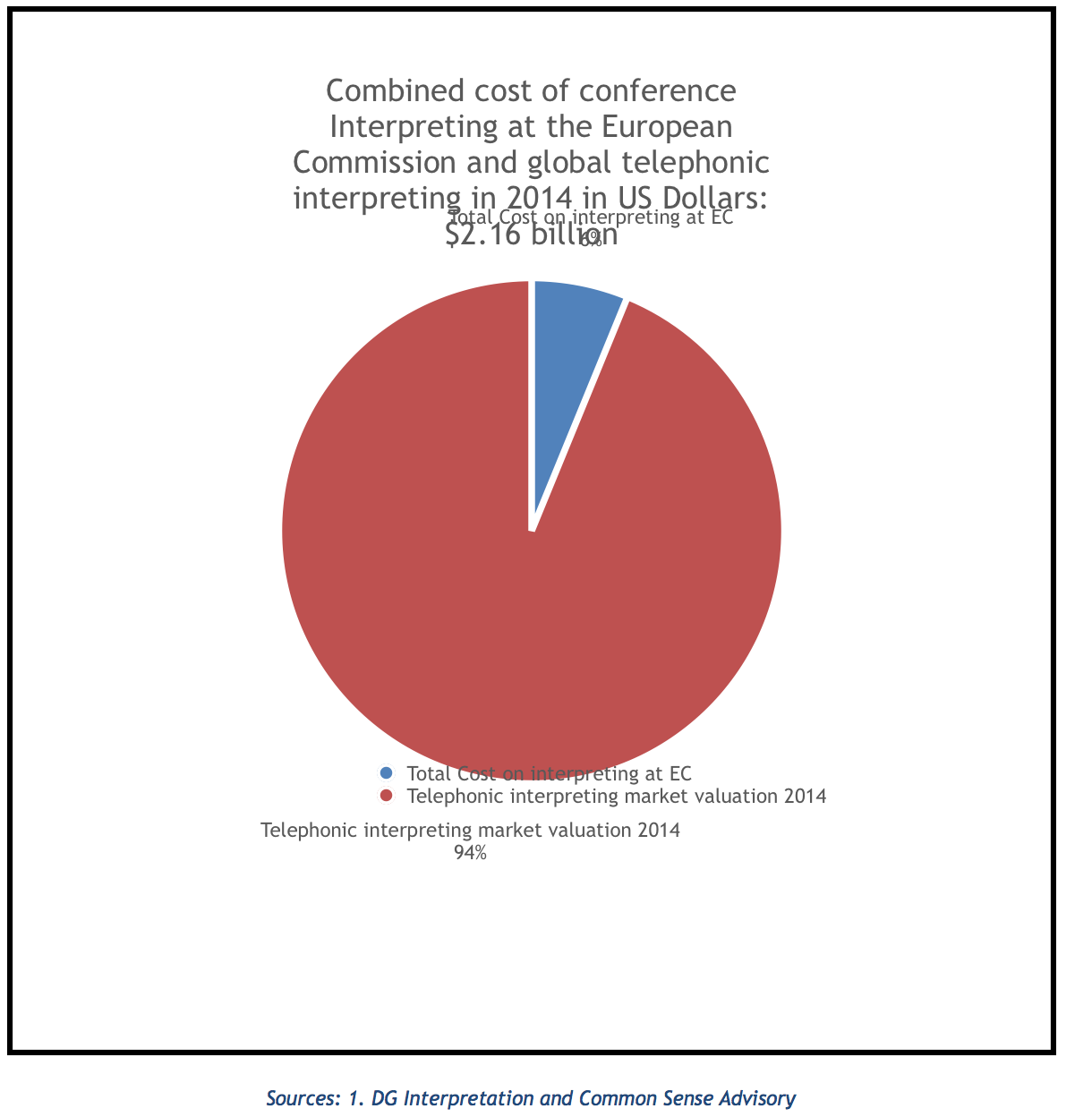Riding the Wave of Technology and Interpreting: Finding Opportunity in Uncharted Waters
By Barry Slaughter Olsen (1)
The tools the world uses to communicate are changing, and as global multilingual communication goes, so must interpreting follow. Technology is radically changing the way organizations and individuals meet, interact and share information (think Skype, Adobe Connect, Cisco WebEx and BlueJeans, to name just a few of today’s popular platforms).
As interpreters, we must pay attention to these trends, because the tried and true ways of meeting face to face, while not disappearing, are now part of a much broader set of options when it comes to communicating, negotiating or transacting business, in one language or many.
In the video above I’ve tried to answer three questions that are probably on every interpreter’s mind to one extent or another:
1. How is technology affecting interpreting today?
2. Will technology remove interpreters from the meeting room?
3. Will I be replaced by technology?
Rather than rehash my answers from the video here, let me provide some perspective as to why interpreters should pay attention to the macro-trend toward virtual meetings and remote communication and engage in constructive discussion about it. I may get a little “geeky” and talk about technology and markets, but bear with me. This information is directly relevant to all interpreters.
Before, videoconferencing technology required significant physical infrastructure and technical support in order to work, much like traditional conference interpreting equipment. Both were expensive. So only big organizations with large enough budgets to purchase, install and maintain them (usually large corporations or national governments) invested in these technologies.
Adding the necessary audio tracks for simultaneous interpretation for videoconferences was, well, cumbersome and expensive to say the least. Growth was slow. Cloud computing is changing all that.
Much of the physical infrastructure once needed for virtual meetings has now gone virtual itself. Expensive hardware built especially for videoconferencing (like codecs) has been converted to software that can run on virtual machines (computer servers in the cloud). Video and web conferences can connect to virtually any device with a screen, microphone and camera connected to the web. That means anything from smartphones to telepresence studios as well as everything in between.
This migration to the cloud has made virtual meetings much more affordable and much easier to conduct than ever before. It now makes sense for organizations to use these technologies to increase productivity and bring down costs. The result? A growth trend in virtual meetings projected to remain strong over the next five years. The web conferencing market is expected to reach US$2.88 billion by 2017, with a compound annual growth rate (CAGR) of just under 10 percent, according to the independent research firm Future Market Insights (2). While Global Industry Analysts, Inc. projects that the cloud-based videoconferencing market is expected to grow to US$2.9 billion by 2020 (3). Yes, web conferencing and videoconferencing are different. You can find some concise definitions of both here.
Remote or virtual meeting technology isn’t coming down the pike, it is already here. Many interpreting service providers have been using existing voice and video networks for telephone interpreting and video remote interpreting (VRI) for decades. However, almost all are limited to providing consecutive interpretation. Consequently, their use is most often appropriate for shorter interactions.
The new technologies make remote simultaneous interpreting possible, eliminating the time constraints imposed by remote consecutive platforms. With that critical barrier overcome, virtual meeting technology is only going to get stronger as it is adopted by more and more organizations.
So this begs the question: As more and more governments, courts, businesses, and hospitals use videoconferencing, web conferencing, webinars and conference calls to do business, how are their language interpretation needs going to be met? In my opinion, this is where the collective creative energy of the interpreting profession should be focusing its attention. This change brings both opportunity and threat, depending on how we respond. Overall, I believe interpreters stand to gain more than they stand to lose by working in new ways.
A simple comparison will help illustrate this point. According to the European Commission’s Directorate General for Interpretation (DG-Interpretation or SCIC), often cited as the world’s largest employer of interpreters, the total cost of providing interpreting services for the EC in 2014 was €126 million (Roughly US$134 million as I write this blog). (4) Contrast that with the telephonic interpreting market prevalent mainly in the US, UK and Australia. According to the independent research firm Common Sense Advisory, this interpreting market is currently valued at US$2.03 billion (5) (yes, that’s “billion” with a “b”). When you combine the two, conference interpreting at the European Commission only represents 6% of the total (See chart below).
Sharp minds will quickly note that the two types of interpreting—conference and telephonic—are very different from each other. And that is precisely the point; the emergence of one (telephonic) did not supplant the other (conference). Rather, the interpreting services market expanded to meet increased demand and the opportunities for individual interpreters grew. Let me quickly point out that technology is being used in some instances to remove interpreters from the physical meeting space, but overall, human interaction is increasing, as is the need for interpreting.
At the same time, technology is creating new opportunities for interpreters willing to work in new ways. These new forms of communication will not replace traditional meetings, they will complement them. As a profession, we need to be in front of this trend – not dragging our heels as we bring up the rear. Only out front can we help craft how the technology is designed and used for multilingual virtual meetings. Only out front can we ensure decent working conditions and pay.
Whether they acknowledge it openly or not, interpreters all over the world are now working on webinars, conference calls, videoconferences, and in some cases, working remotely to overcome language barriers while the delegates, patients and providers, and parties to legal proceedings they serve continue to meet face-to-face and increasingly online. These trends are only growing.
This is why at the 5th InterpretAmerica Summit we’ll be engaging in frank dialog with all stakeholders (interpreters, educators, technology providers, language service companies and end users) about how to find opportunity in these uncharted waters.
The Summit is being hosted by the Middlebury Institute of International Studies at Monterey on June 12-13, 2015. The complete program will be published in the coming days.
We hope you can join us. If not, be sure to follow @InterpAmerica and the hashtag #IA5 on Twitter so you can keep up with the proceedings of the Summit.
(1) Barry Slaughter Olsen is a veteran conference interpreter and technophile with over two decades of experience interpreting, training interpreters and organizing language services. He is an associate professor at the Middlebury Institute of International Studies (MIIS), the founder and co-president of InterpretAmerica, and General Manager of Multilingual Operations at ZipDX. For updates on interpreting, training and technology follow him on Twitter @ProfessorOlsen.
(2) Web Conferencing Market to Witness Fastest Growth Between 2015 and 2020, Driven by Globalization http://www.futuremarketinsights.com/reports/details/web-conferencing-market#src=whatech
(3) The Global Video Conferencing Services Market: Trends, Drivers and Projections. http://www.strategyr.com/MarketResearch/Video_Conferencing_Services_Market_Trends.asp
(4) “Interpretation in figures – 2014,” DG Interpretation, Brussels, Belgium, 2014.
(5) “The State of the Interpreting Market,” by Hélène Pielmeier and Donald DePalma, Common Sense Advisory, January 2015, http://www.commonsenseadvisory.com/AbstractView.aspx?ArticleID=24088
0

Thank you for sharing this article.
I recently became unemployed as a Medical Interpreter due to the fact that the Medical Center I worked at decided that using a telephonic and video interpreting is less expensive. They agree that it loses the personal touch and knowledge we have of the culture and community they serve but the bottom line was cost. Sad to say 2 dozen Medical Interpreters lost their job.
This seems to be the new trend with these companies coming in to the medical centers and showing their technology and savings from minute to minute. Very sad and very scary!!!